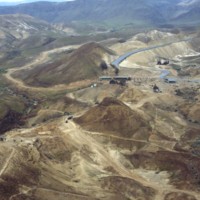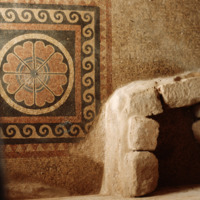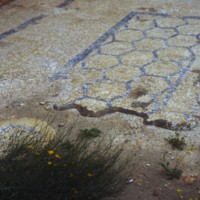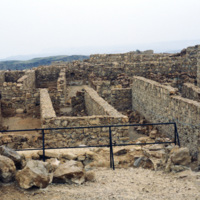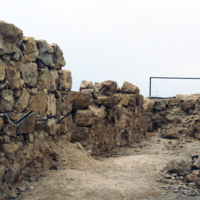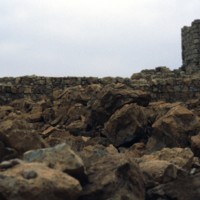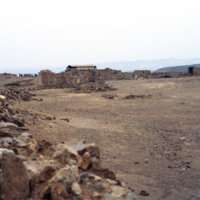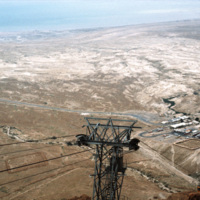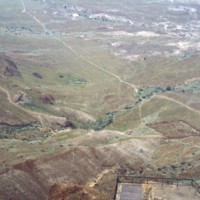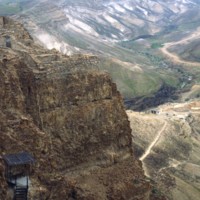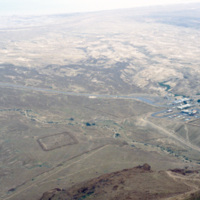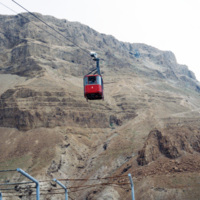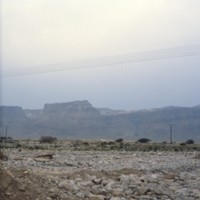Browse Items (13 total)
- Tags: Masada
Sort by:
Massada: Roman Road (1 of 2)
Largely untouched for two thousand years, this photograph shows the original Roman access road to Masada, which can still be traveled on foot by visitors. On the western side, this “ramp” was constructed by the Romans as a way to penetrate the…
Masada: Roman Style Tile & Bath
This photograph shows a Roman style bath built by King Herod at Masada. Masada was one of the fortresses built during Herod’s rule in the first century BC. Herod was generally unpopular with the Jews, so perhaps this is why he spent much effort…
Tags: archeology, arts, bath house, Herod, historic, Masada, roman tiles
Massada: Tiles in Herod’s Palace
Mosaic in King Herod’s Palace at Masada. Despite it’s remote location, excavations at Masada have revealed beautiful tiles and mosaics, and balconies with beautiful views of the surrounding country. Masada was taken in A.D. 66 by Jewish rebels who…
Tags: archaeology, Herod, historic, Masada, religion
Masada: Ruins of Herod’s Palace
Excavations of Masada were not seriously undertaken until the 1960s when Masada became part of Israeli territory. With the help of twentieth century technology archeologists were able to access this natural fortress that had been largely untouched…
Masada: View from the top (2 of 2)
Upon embarking on a rigorous and dangerous climb, tourists can reach the top of Masada by a small number of pathways. Spanning around 200,000 square yards, the top of Masada is completely flat. Today, the top still contains the ruins of Herod’s…
Masada: View from the top (1 of 2)
Upon embarking on a rigorous and dangerous climb, tourists can reach the top of Masada by a small number of pathways. Spanning around 200,000 square yards, the top of Masada is completely flat. Today, the top still contains the ruins of Herod’s…
Masada: Natural Fortress, Ruins, Visitors
This photo is taken at the top of Masada, a horst that was used as a fortress by many ancient people. King Herod, in the first century BC, built an elaborate palace here, perhaps fearing he would have to go into isolation because of his unpopularity…
Masada: View Toward Dead Sea
This photograph looks east from Masada towards the Dead Sea. Masada is a natural fortress that was most invested in by King Herod, who in the first century BC constructed a intricate palace atop this isolated horst. Masada was the site of a mass…
Tags: landscape, Masada, the Dead Sea
Masada: Roman Siege Camp Ruins
Seen from atop Masada, a natural fortress in an otherwise wasteland, is the remains of a Roman Siege camp from AD 74. Jewish rebels took the fortress in AD 66 and held it for seven years until Romans took them by force. The rebels committed mass…
Masada: Ruins, View From Top
This photograph shows Masada’s natural fortification and ruins of King Herod’s Palace built in the first century BC. Because of it’s remote location and natural defenses, Masada has been mostly untouched since the first century BC. Recent…
Tags: King Herod, Masada, Roman Road, ruins
Masada: Roman Siege Camps
Taken from atop of Masada this photograph shows the remains of the Roman Siege camps constructed in AD 74. At the time Masada had been taken by approximately 900 Jewish Rebels. Masada eventually fell to the Romans and the rebels, also known as the…
Tags: King Herod, Masada, Roman Siege Camps
Masada: Cable Car Access
Masada, once a fortress in the last Jewish holdout against the Romans, represents bravery and self sacrifice to modern Jews, which ended in the mass suicide of nine hundred rebels. It is now reached by cable car for visitors. In the twentieth…
Tags: archaeology, Dead Sea Scrolls, historic, Masada, religion, tourism
Masada
Masada is a natural fortress which was used by Jews during rebellion against the Romans. It is located near the Dead Sea and some biblical fragments, pieces of the Dead Sea Scrolls, have been located here. In AD 73/74 nine hundred Jewish rebels…
Tags: archaeology, Dead Sea Scrolls, historic, Masada, religion
